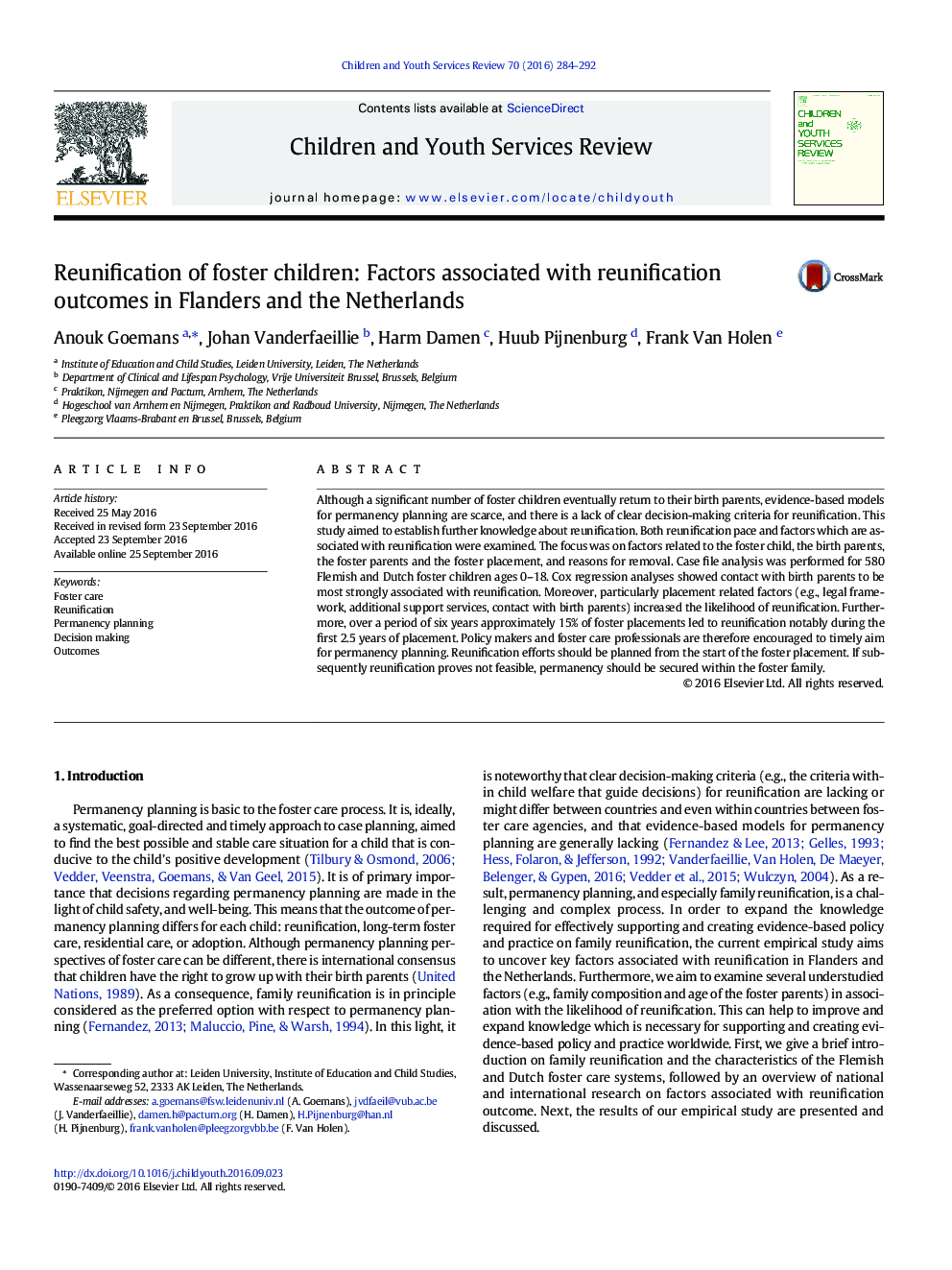| Article ID | Journal | Published Year | Pages | File Type |
|---|---|---|---|---|
| 4936644 | Children and Youth Services Review | 2016 | 9 Pages |
Abstract
Although a significant number of foster children eventually return to their birth parents, evidence-based models for permanency planning are scarce, and there is a lack of clear decision-making criteria for reunification. This study aimed to establish further knowledge about reunification. Both reunification pace and factors which are associated with reunification were examined. The focus was on factors related to the foster child, the birth parents, the foster parents and the foster placement, and reasons for removal. Case file analysis was performed for 580 Flemish and Dutch foster children ages 0-18. Cox regression analyses showed contact with birth parents to be most strongly associated with reunification. Moreover, particularly placement related factors (e.g., legal framework, additional support services, contact with birth parents) increased the likelihood of reunification. Furthermore, over a period of six years approximately 15% of foster placements led to reunification notably during the first 2.5Â years of placement. Policy makers and foster care professionals are therefore encouraged to timely aim for permanency planning. Reunification efforts should be planned from the start of the foster placement. If subsequently reunification proves not feasible, permanency should be secured within the foster family.
Related Topics
Health Sciences
Medicine and Dentistry
Perinatology, Pediatrics and Child Health
Authors
Anouk Goemans, Johan Vanderfaeillie, Harm Damen, Huub Pijnenburg, Frank Van Holen,
